An OUTLANDER-related adventure (Part 2)
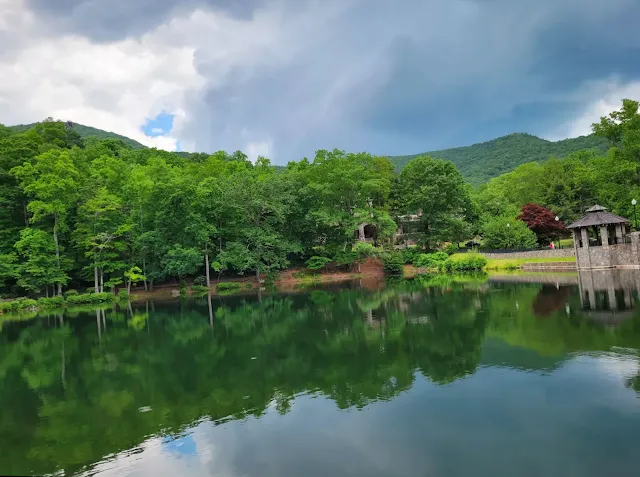
This is Part 2 of my account of my recent Road Scholar trip to Montreat, North Carolina. You can see Part 1 here, Part 3 here, and Part 4 here.
Part 2: Tuesday, May 31
A surprise at breakfast: Chatting with a woman from our group whom I hadn't spoken to before, I mentioned that I'm a huge fan of OUTLANDER. It turns out she's also a fan, and she's a regular reader of my Outlandish Observations blog! That was a thrill for both of us. It's not the first time I've run into someone who knows me from TheLitForum.com or Outlandish Observations, but it's always fun when that happens. Given the subject matter of this particular Road Scholar program, it was pretty likely that I'd run into another OUTLANDER fan at some point during the week, so maybe it's not surprising, but it was a fun way to start the day, no question about it!
In the first session on Tuesday, we learned a lot about what life was like for the Lowland Scots in the 17th century. The land in the west, closer to Ulster, was poor and boggy. The people lived in stone huts with thatched roofs. Their main source of food was oats and barley. They had a few cattle, but Highlanders frequently raided them, a practice known as "reiving". (Rupert might consider this fun, but when you consider the impact on those whose cattle were stolen, it's not so amusing!)
Eventually the landowners concluded there was more profit in sheep than farming, and conditions worsened for the tenant farmers. In 1607, the Flight of the Earls marked the beginning of a wave of migration from the Lowlands of Scotland to the Ulster region of Northern Ireland that would continue throughout the 17th century. If you look at the map, it's clear that Ulster is only a short distance away, by sea, from the Lowlands.
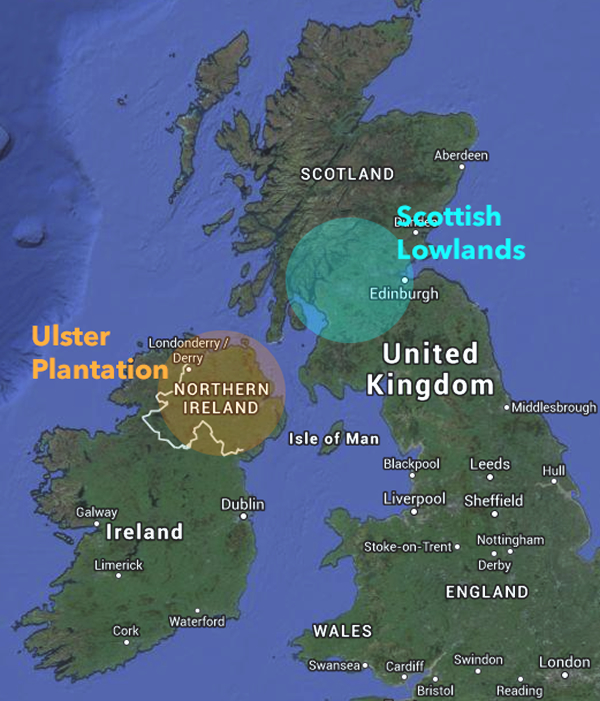
The Scots-Irish settlers did well in Ulster for a while, but that changed at the beginning of the 18th century. According to this site:
In 1704, Parliament passed the Test Act, which provided that the Presbyterian Church in Ireland was not legally recognized. This meant that Presbyterian ministers could not conduct marriages or baptisms. Members of the Presbyterian Church could not hold a position in the Army or Navy, customs, excise or Post Office departments, any court of law or magistracy, without first becoming a member of the Anglican Church. By the beginning of the 1700s, there were many prosperous Scots-Irish in northern Ireland and they often held such offices. The Test Act meant that they had to choose between their religious conscience and their livelihood.
Imagine someone like Hiram Crombie, for example, a devout Presbyterian, faced with such a choice. In those circumstances, it's not surprising that many Presbyterians chose to emigrate to the Colonies, in search of a place to practice their religion. We were told that 250,000-300,000 people emigrated from Ulster (Northern Ireland) to America in the 18th century.
In the second morning session, our instructor, Righton McCallum, talked about the settlers in North Carolina in the 18th century, particularly during the time of the Revolutionary War. Righton is a terrific speaker, and her lectures were full of stories and anecdotes, always entertaining. I jotted down a few of the highlights:
1) Whisky was important because it was a source of cash, if crops failed. For that reason, a whisky still was "as good as land", in Righton's words. I thought immediately of the aftermath of the attack on the malting shed in ABOSAA:
The marauders had destroyed not only a season’s whisky in the making, but also the malting shed, only now rebuilding. That meant no surplus of the lovely drink this year to sell or trade for necessities.
(From A BREATH OF SNOW AND ASHES by Diana Gabaldon, chapter 40, "Bird-Spring". Copyright© 2005 by Diana Gabaldon. All rights reserved.)
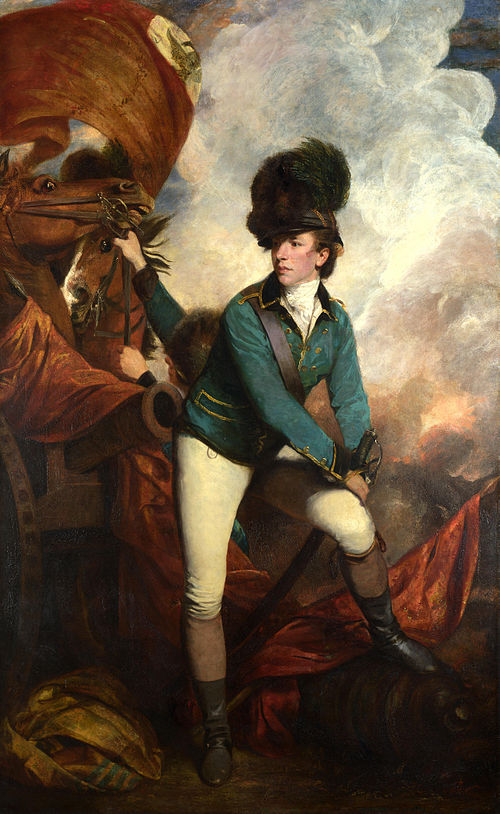
2) Banastre Tarleton (pictured above), whom we met in MOHB as a friend of William's, was known as "Bloody Ban", because he was known for killing Continental troops after they surrendered. Here's a bit from Wikipedia about the Battle of Waxhaws:
On 29 May 1780, Colonel Tarleton, with a force of 149 mounted soldiers, overtook a detachment of 350 to 380 Virginia Continentals, led by Colonel Abraham Buford, who refused to surrender or to stop his march. Only after sustaining many casualties did Buford order the American soldiers to surrender. Nonetheless, Tarleton's forces ignored the white flag and massacred the soldiers of Buford's detachment.
Our instructor said that Tarleton ordered his troops, when they came upon a house that had both a Bible and a book of Psalms, to burn the house because the inhabitants must be Presbyterians.
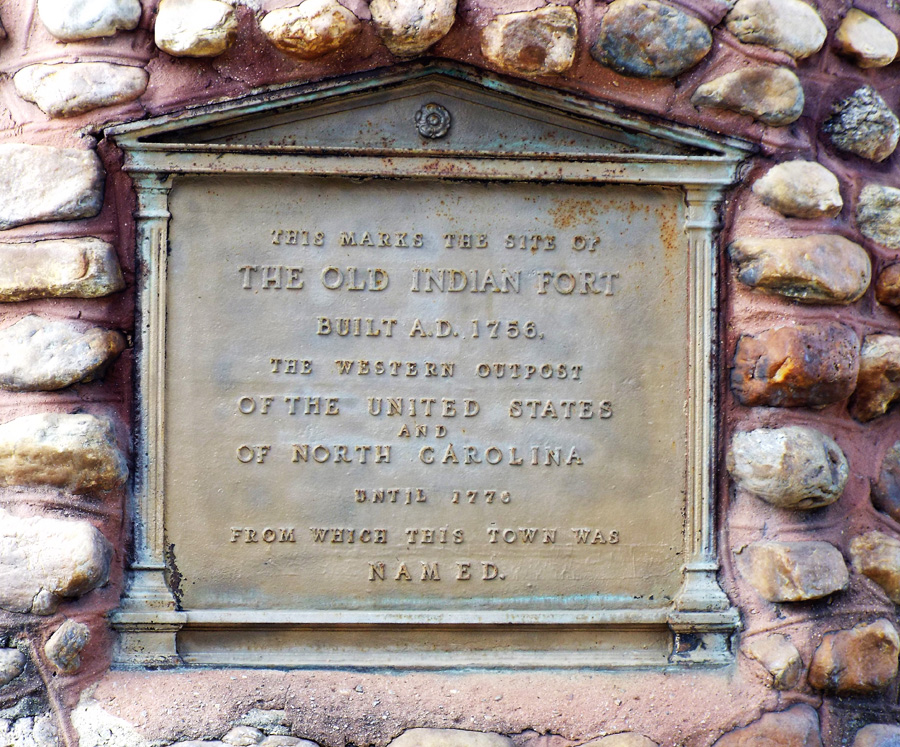
3) The settlement of Old Fort, North Carolina, not far from Montreat, was considered "the western-most outpost of Colonial civilization" from 1756 to 1776. That's hard to imagine today.
4) The German settlers knew how to build log cabins. The Scots-Irish settlers, coming from a land where wood was scarce, did not. So the Germans taught them the technique.
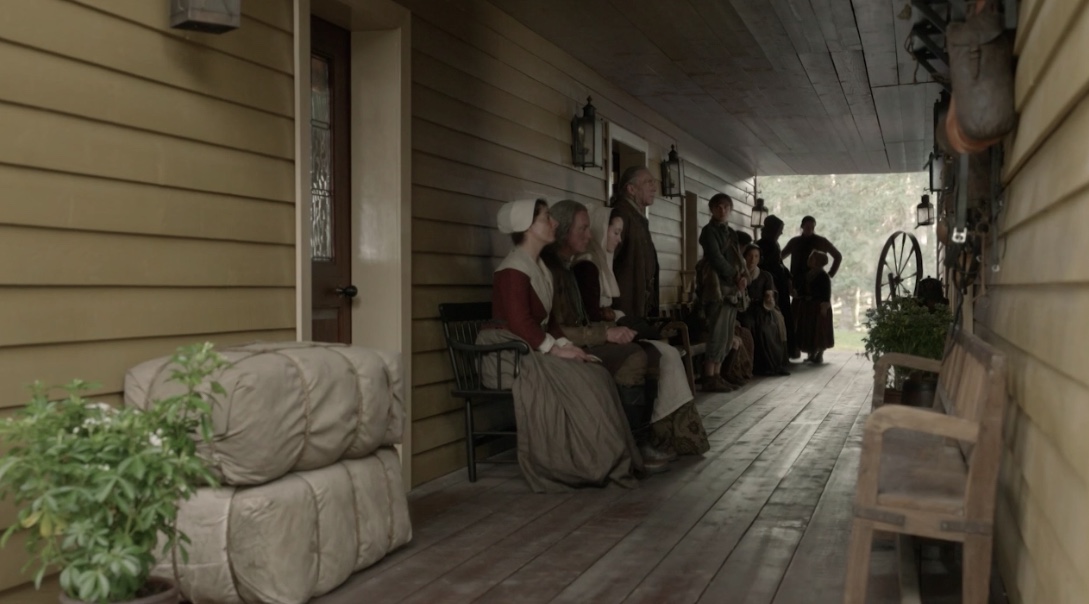
5) Have you ever wondered why the Big House on the OUTLANDER TV show was constructed with a breezeway? It turns out that this wasn't designed just for the convenience of filming the show. This style of construction, where a house would have an open space in the middle on the ground floor, was known as a "dog-trot house". From Wikipedia:
The breezeway through the center of the house is a unique feature, with rooms of the house opening into the breezeway. The breezeway provided a cooler covered area for sitting. The combination of the breezeway and open windows in the rooms of the house created air currents which pulled cooler outside air into the living quarters efficiently in the pre-air conditioning era.
Our instructor said that they would typically have fencing on both ends of the breezeway, to close it up at night in order to keep animals out.
6) After the Continental Army surrendered at Charles Town (mentioned in BEES chapter 125, "A Woman of the Second Type"), there were few Continental troops in the South. The exception was a company known as the "Blue Hen's Chickens", troops who came down from Delaware to fight in the Carolinas for the Patriot side. The Blue Hen eventually became the state bird of Delaware. According to this site:
During the Revolutionary War, the men of Captain Jonathan Caldwell’s company [....] took with them game chickens that were said to be of the brood of a famous Blue Hen and were noted for their fighting ability.
When not fighting the enemy, the officers and men pitted their Blue Hen chickens in cockfights, an activity that is now illegal in all 50 United States. [....] The fame of these cockfights spread throughout the army and when in battle, the Delaware men fought so valiantly that they were compared to these fighting cocks.
I wonder if we'll see a reference to these troops from Delaware in Book 10?
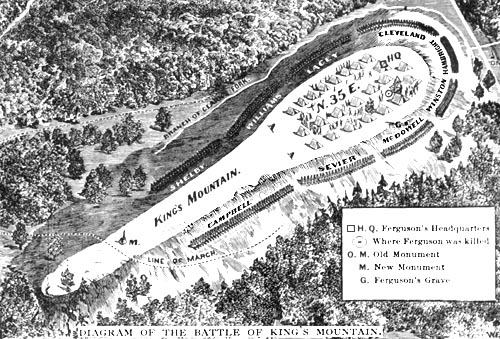
7) I learned some details about the battle strategy at Kings Mountain that we didn't see in BEES. For example: The battlefield was shaped like a shoe, as you can clearly see from the diagram above.
After dinner that evening, one of our instructors, Anne Lough, played some Appalachian music, which I enjoyed very much. Here's a video of Anne giving a similar performance at another location only a few days before our Road Scholar program.
It was a very full day, with lots of information to absorb, but very interesting!
Part 1 of my account of this trip is HERE and Part 3 is HERE.








Comments